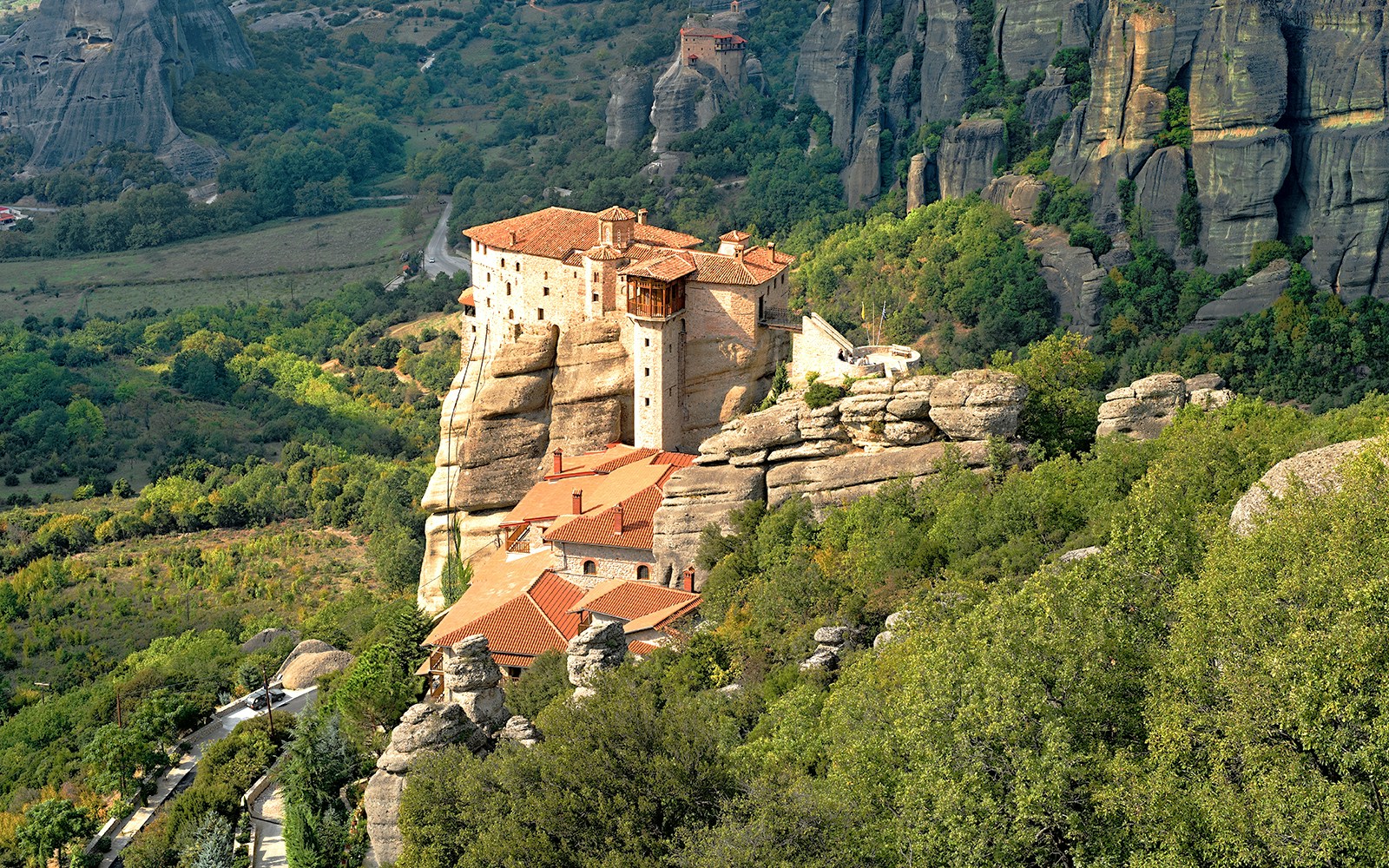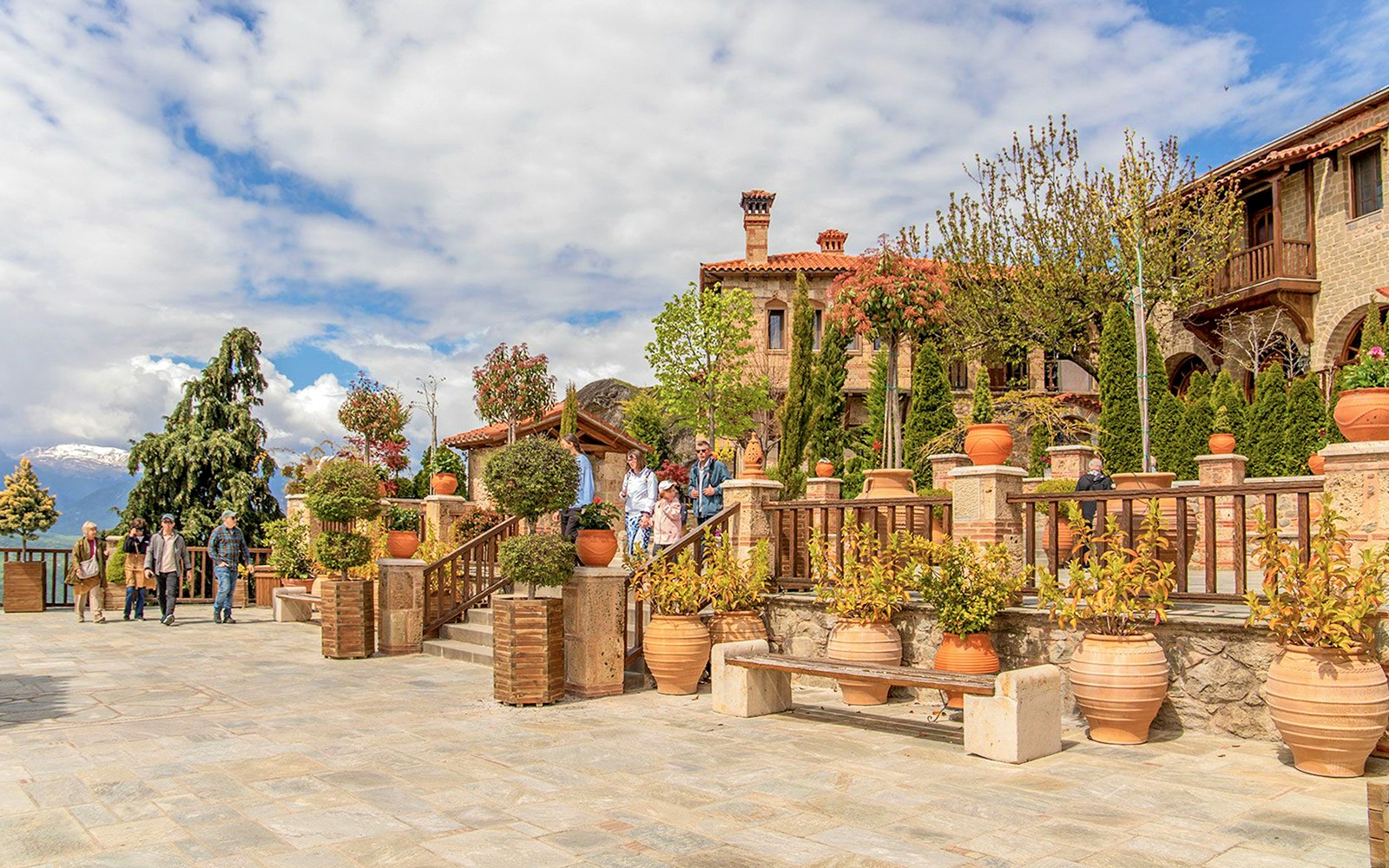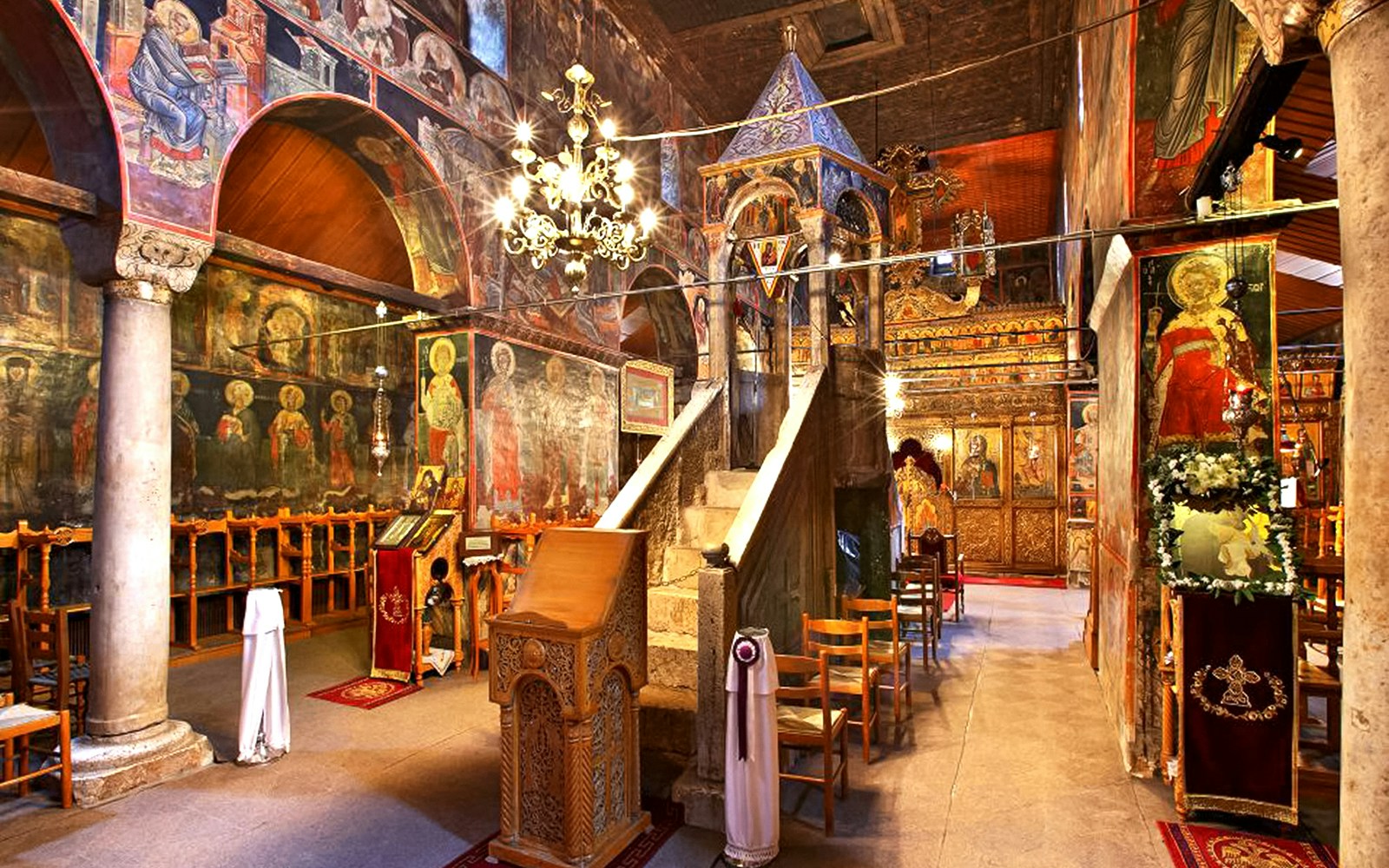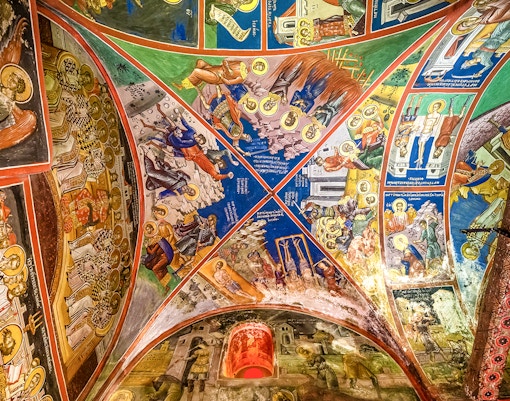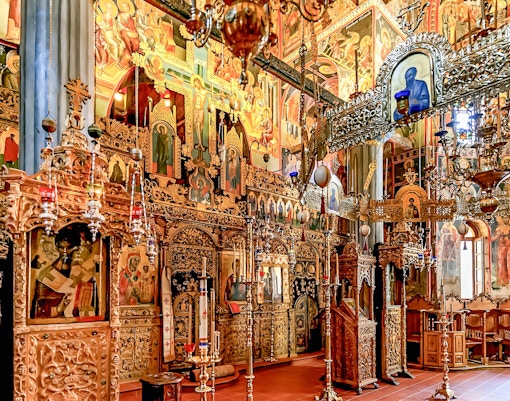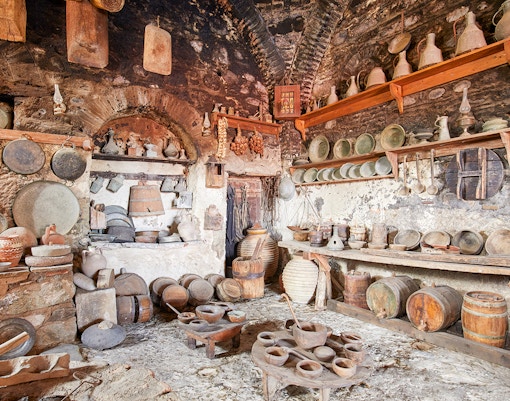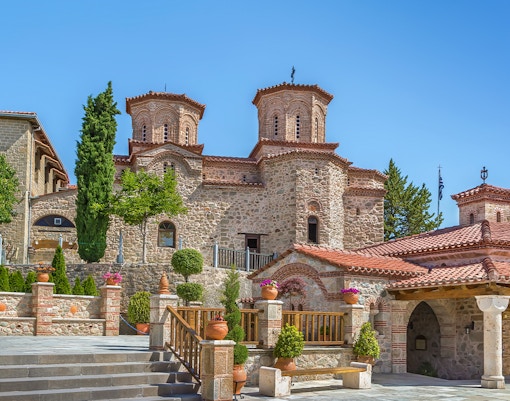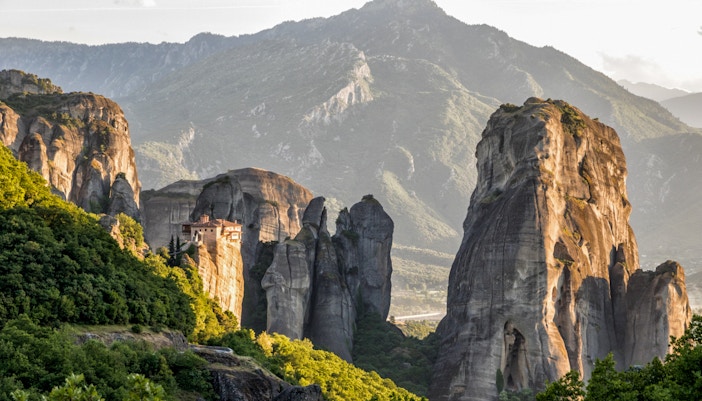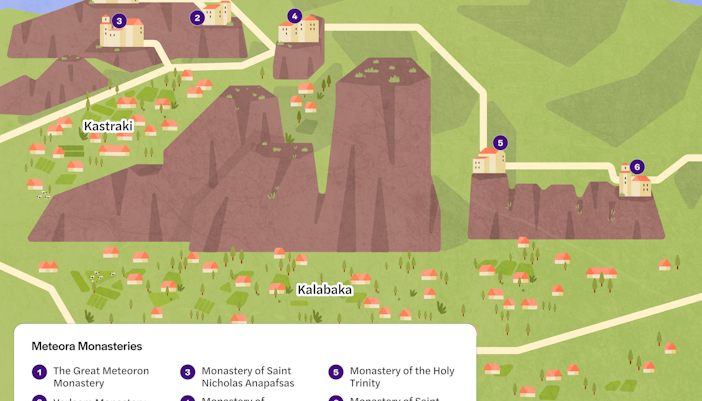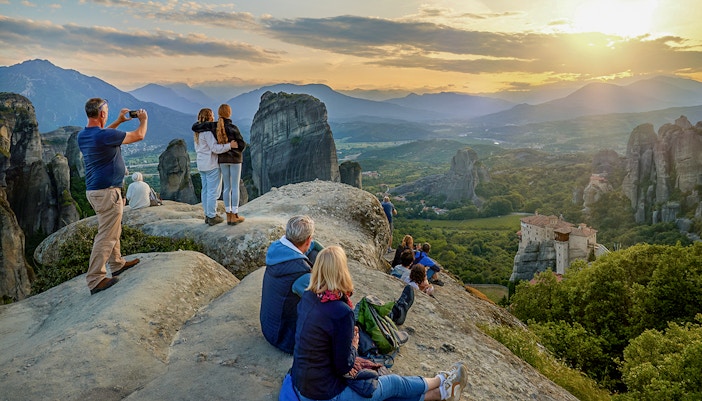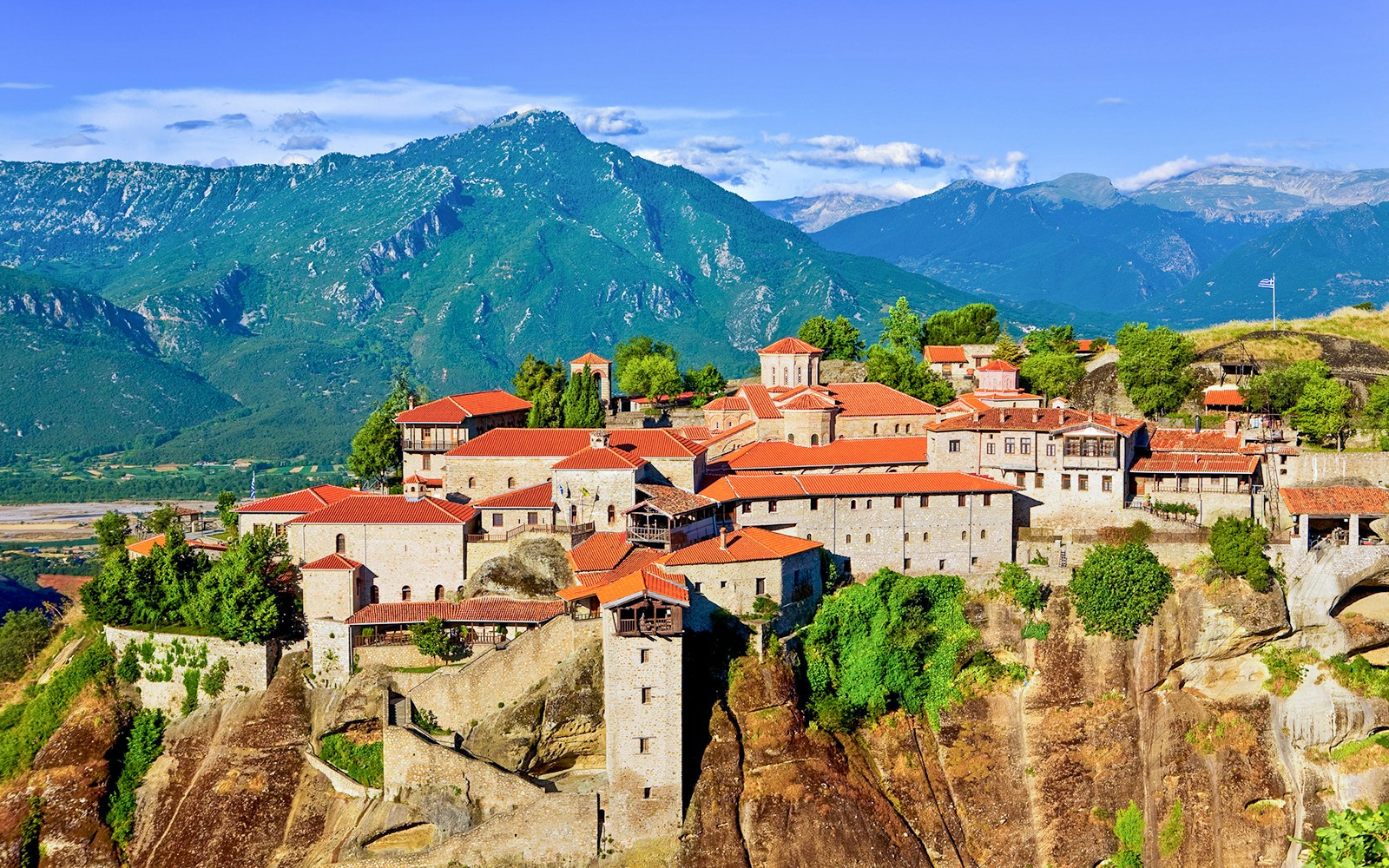At the heart of the monastery stands the main church, dedicated to St. Stephen. Its post-Byzantine design features a vaulted ceiling, central dome, and an interior adorned with vivid frescoes and gilded icons depicting scenes from the New Testament and the life of St. Stephen.
Why you should add St. Stephen’s Monastery to your Meteora itinerary
Easiest to access
St. Stephen’s welcomes you across a small footbridge instead of hundreds of steep steps. It’s the easiest monastery to reach, opening its doors to visitors of all ages, even if you’d find the other climbs too demanding.
Reborn as a convent
Nearly abandoned in the mid-20th century after wartime damage, it was revitalized by an order of nuns who reestablished it as a lively convent. Today, it offers a genuine glimpse into the daily lives of Orthodox nuns who preserve its traditions, beauty, and spiritual atmosphere.
Home to holy relics
The monastery holds the skull of St. Charalambos, a relic that Orthodox Christians believe protects against plagues and illness. Pilgrims often visit specifically to pay respects to the saint, giving the monastery an additional layer of spiritual significance.
